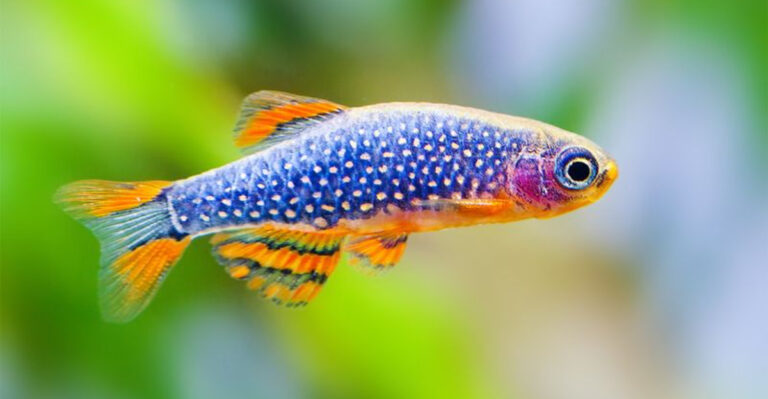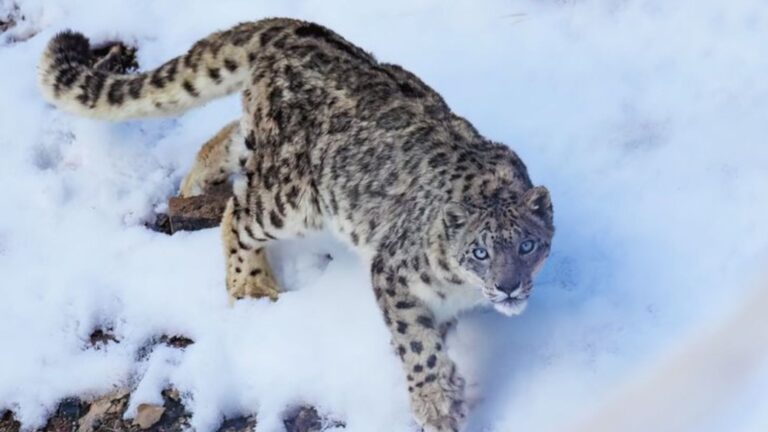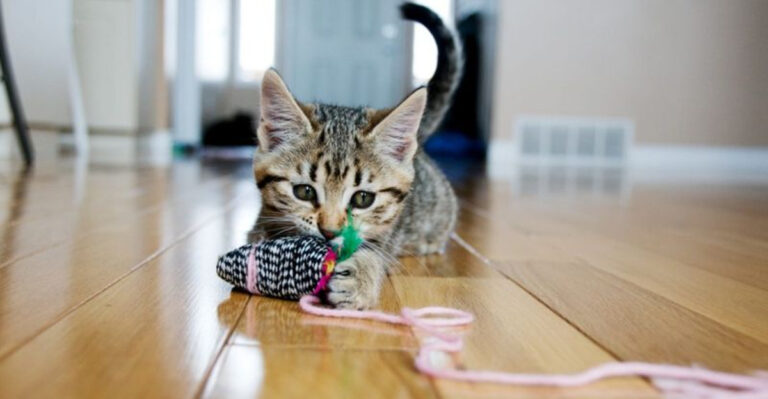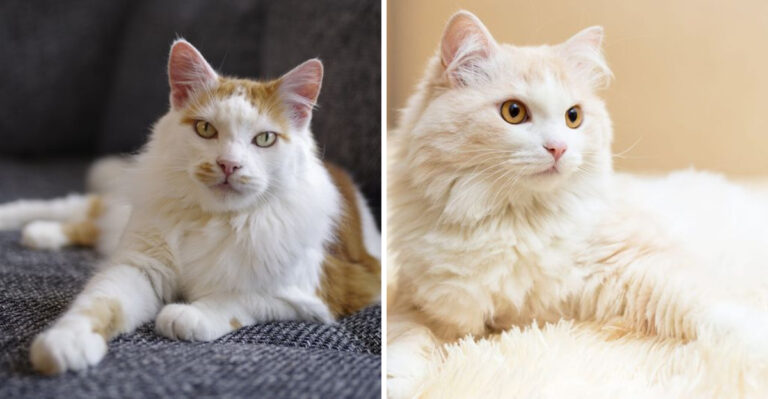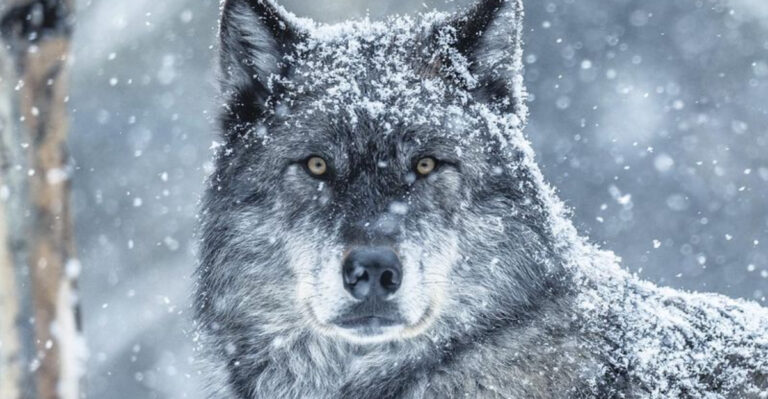15 Dog Behaviors That Baffle Owners (And What To Do About Them)
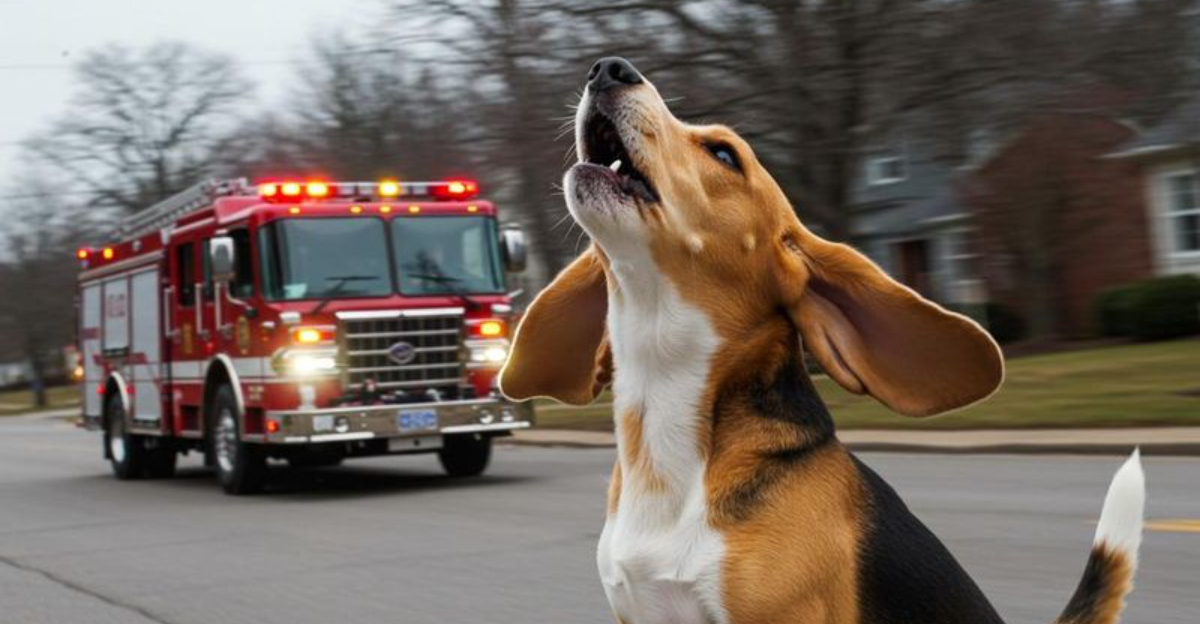
Ever wonder why your furry friend does those weird things that leave you scratching your head? Dogs have their own unique language and sometimes their behaviors seem downright bizarre to us humans.
Understanding these quirky habits isn’t just fascinating – it can make life with your canine companion much smoother. Let’s unravel some of these doggy mysteries together!
1. Spinning Before Lying Down
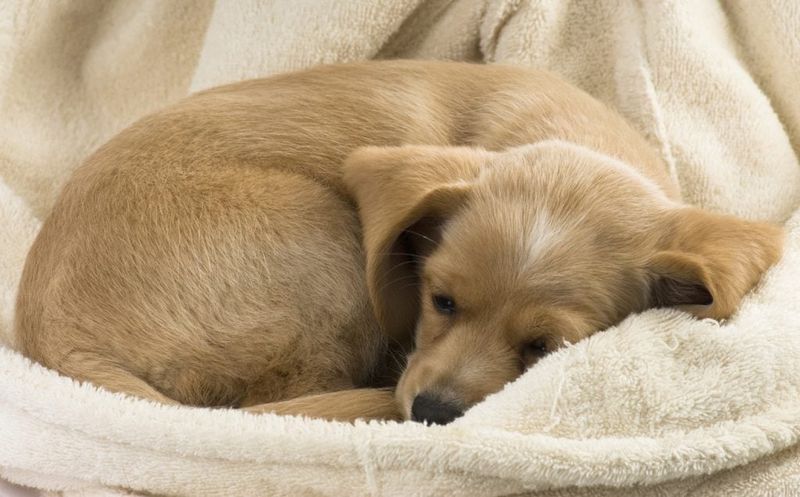
Wild canine ancestors would circle to flatten grass and check for dangers before sleeping. This ancient instinct remains hardwired in your modern pet’s brain!
Try providing a round bed that satisfies this circling urge. Don’t worry unless the spinning becomes excessive or compulsive, which might indicate anxiety requiring veterinary attention.
2. Eating Grass Then Vomiting
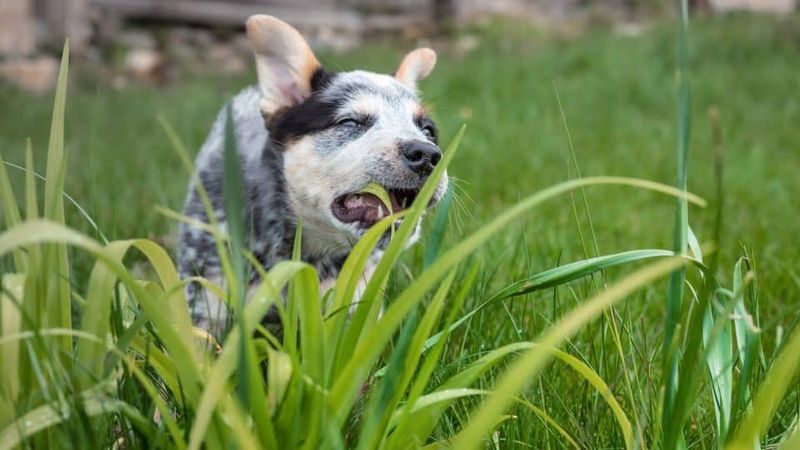
Contrary to popular belief, dogs don’t always eat grass because they feel sick. Many pups simply enjoy the taste or texture of fresh greens.
Occasional grass munching is typically harmless. However, if your dog seems obsessed with eating plants or vomits frequently afterward, consult your vet to rule out dietary deficiencies or digestive issues.
3. Sudden Zoomies
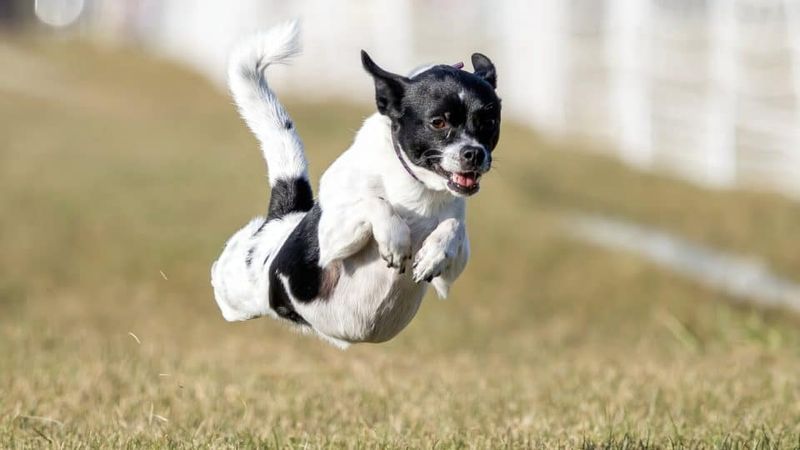
Those random bursts of energy – officially called Frenetic Random Activity Periods (FRAPs) – are your dog’s way of releasing pent-up excitement or stress.
Create a safe space for these energy explosions by clearing obstacles. Schedule regular exercise to help minimize extreme zoomie episodes. Most importantly, enjoy the hilarious spectacle of your normally dignified pet racing around like a furry tornado!
4. Tilting Their Head When You Talk
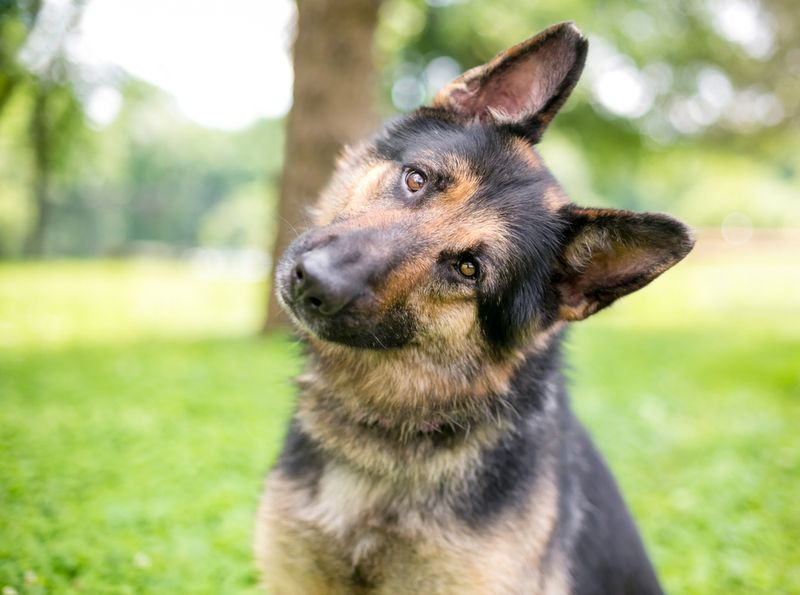
That adorable head tilt isn’t just cute – it’s your dog trying to understand you better! Dogs adjust their ears to catch sounds more clearly and may be trying to see your face better.
Encourage this attentive behavior by using consistent command words. If head tilting becomes excessive or happens without stimuli, check with your vet as it could indicate an ear infection or neurological issue.
5. Scooting Their Butt Across The Floor
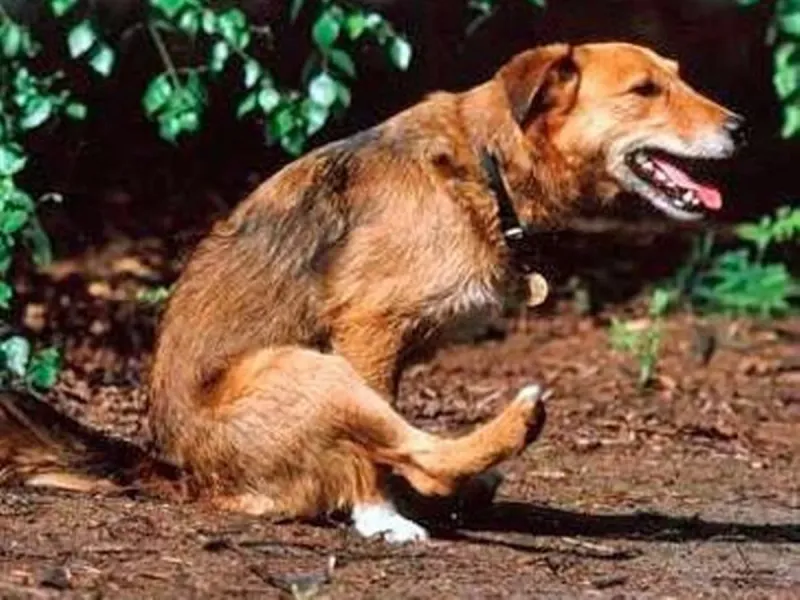
Funny as it looks, butt dragging usually signals discomfort. Full or infected anal glands are the most common culprit behind this embarrassing behavior.
Check for redness or swelling around your dog’s rear end. A trip to the vet or groomer for anal gland expression often solves the problem. Regular grooming and fiber-rich diets can help prevent future floor performances.
6. Howling At Sirens
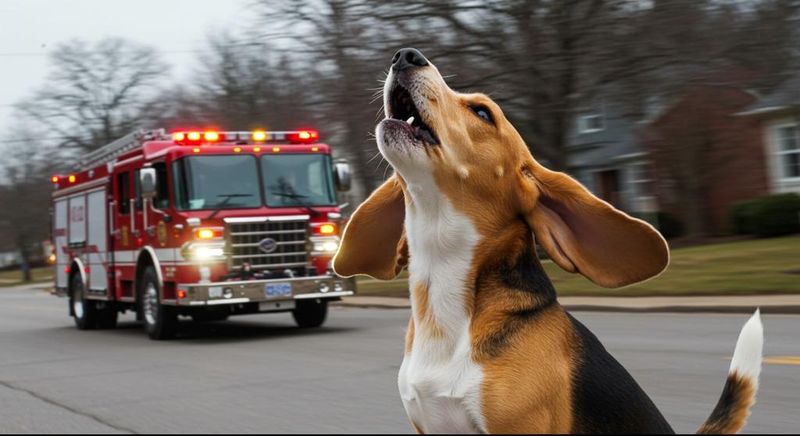
When sirens wail and your dog joins the chorus, they’re answering an ancestral call! The high-pitched sounds resemble wolf howls, triggering your pup’s instinct to respond to pack members.
There’s no need to discourage this natural behavior unless it becomes excessive. For noise-sensitive neighborhoods, try distracting your dog with toys or treats when sirens approach to help minimize the canine symphony.
7. Sniffing Other Dogs’ Rear Ends
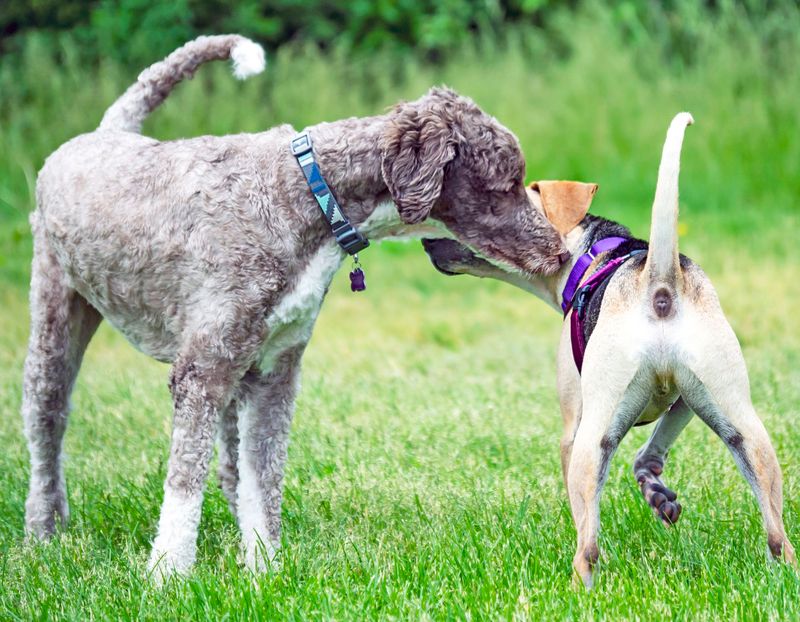
Awkward as it seems to us, butt-sniffing is actually sophisticated canine communication! A dog’s anal glands contain scent information about age, gender, diet, and mood – like reading a detailed ID card.
Allow brief greetings during walks unless either dog seems uncomfortable. Gentle redirection with treats can help if your dog gets too enthusiastic about this particular social custom in inappropriate settings.
8. Hiding Or Burying Treats
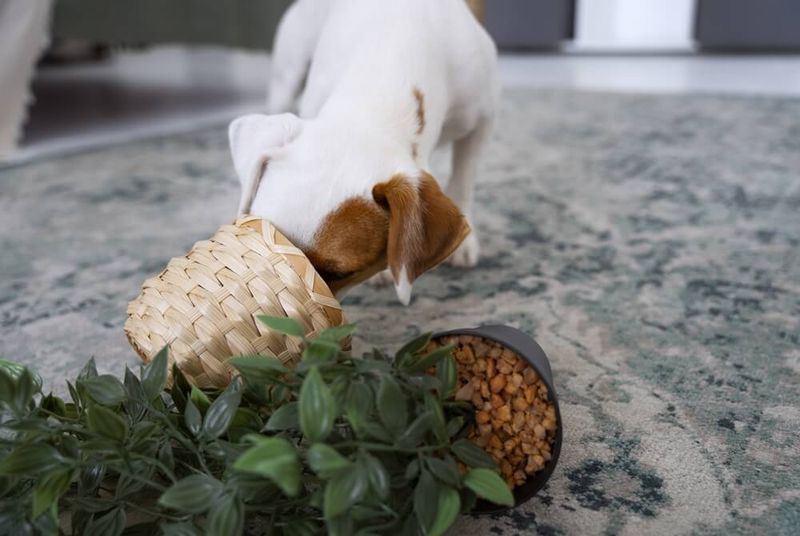
Finding kibble under couch cushions? Your clever pup is “saving for later” just like wild canines cache extra food for lean times.
Provide appropriate toys for this natural hoarding instinct. Puzzle feeders can satisfy the urge while keeping your furniture crumb-free. Just remember where your dog’s favorite hiding spots are to prevent forgotten treats from becoming moldy surprises!
9. Chasing Their Tail
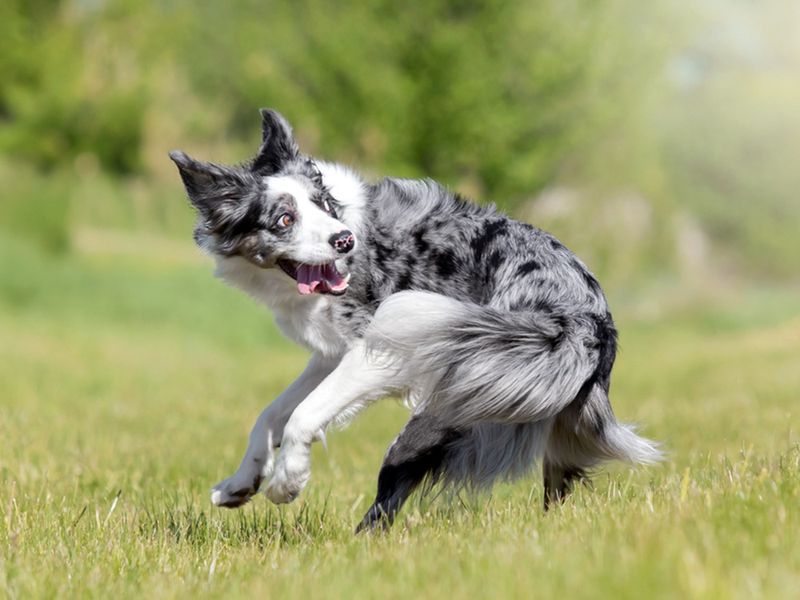
Occasional tail chasing is usually harmless play or curiosity – puppies often discover their tails as if they’re brand new toys!
Provide plenty of mental stimulation through interactive games and toys. However, if tail chasing becomes obsessive or your dog actually catches and hurts their tail, consult your veterinarian as this could indicate boredom, anxiety, or neurological issues.
10. Leaning Against You
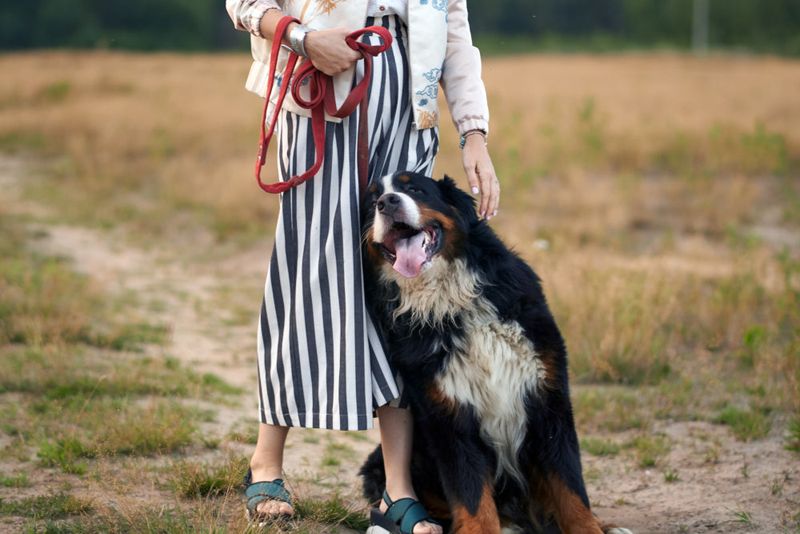
When your dog leans their weight against your legs, they’re not just being clingy – they’re showing affection and trust! This sweet behavior is essentially a doggy hug.
Embrace these moments of connection with gentle pets. For extremely pushy leaners, basic training can help establish boundaries while maintaining your bond.
11. Kicking After Pooping
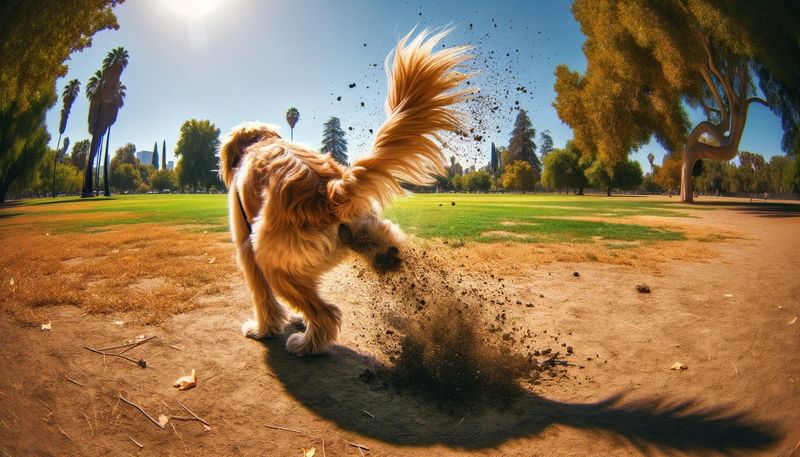
The post-potty kick ritual isn’t your dog trying to cover their mess – it’s actually the opposite! Dogs have scent glands in their paws that activate when they scratch the ground.
This territorial marking broadcasts your dog’s presence to others. There’s no need to discourage this natural behavior unless they’re tearing up your garden. Just be prepared to dodge the occasional dirt spray during walks!
12. Humping Objects Or Other Dogs
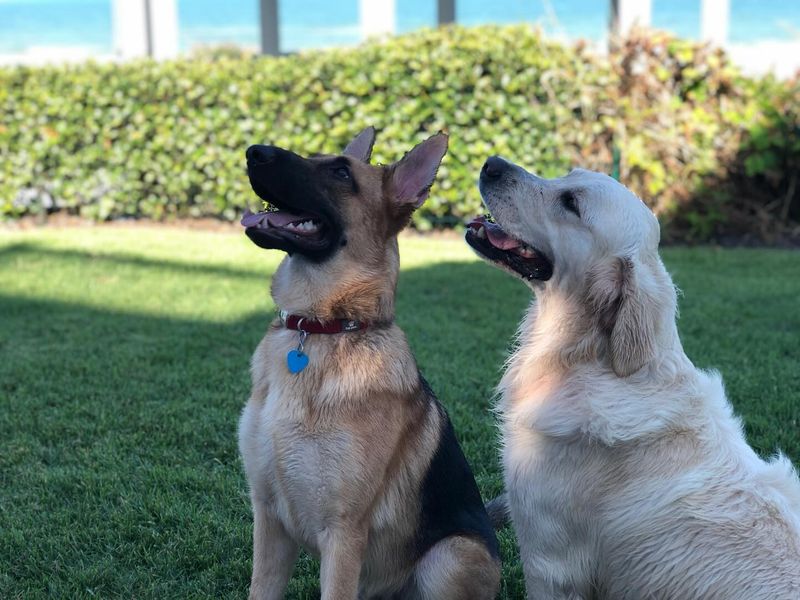
This behavior often signals excitement, stress, or an attempt to establish social ranking, even in neutered pets and females. Redirect with commands and appropriate toys when you notice the behavior starting.
For persistent humpers, increased exercise and structured playtime can help burn excess energy. Consistent training usually reduces embarrassing episodes at the dog park.
13. Sleeping Against You In Weird Positions
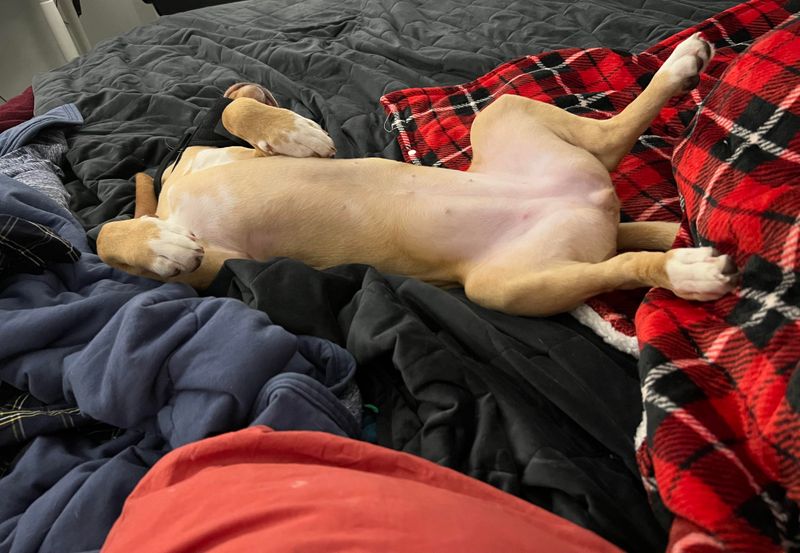
Those contorted sleeping positions pressed against you aren’t just adorable – they’re rooted in pack behavior. Wild canines sleep touching packmates for warmth and security.
Your dog considers you their family and safest space. Unless it’s disrupting your sleep, enjoy this sign of deep trust. Creating a comfortable dog bed nearby can offer an alternative while maintaining your bond.
14. Excessive Licking Of Surfaces
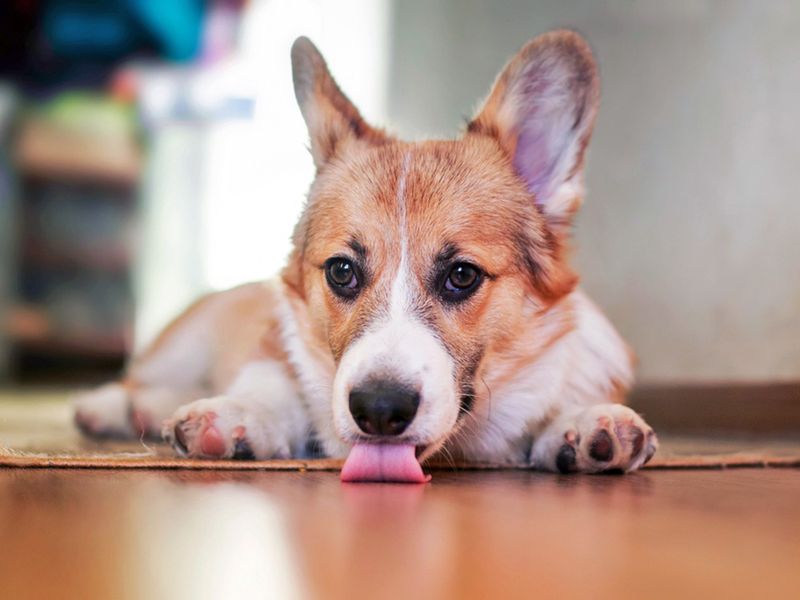
Finding your dog obsessively licking floors or furniture? This peculiar behavior might indicate nausea, dental pain, or nutritional deficiencies – their way of seeking relief.
Monitor when and where licking occurs to identify patterns. Excessive licking of strange surfaces (called ELS by vets) warrants medical attention. Meanwhile, providing appropriate chew toys and puzzle feeders can help redirect the oral fixation.
15. Twitching While Sleeping

Those adorable sleep twitches, paw movements, and muffled barks happen because dogs dream just like humans! During REM sleep, their brains process daily experiences, sometimes triggering physical reactions.
Let sleeping dogs lie – waking them during active dreams can cause confusion. Enjoy watching their dream adventures, but if twitching seems extreme or happens while awake, consult your vet about possible seizure activity.


